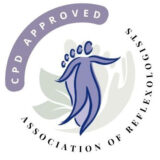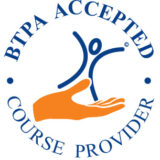In a city, traffic noise is made by numerous engines of cars, buses, trucks, trains and aeroplanes; their wheels turning on the tarmac, the speed of travel through the air, their horns and sirens. Added to this cacophony are also various devices in our workplace or home such as telephones, computers, radios, refrigerators, heating, air conditioning, doors closing, lifts moving, people chatting and communicating. In the early hours of the morning while an odd car travels to its destination, the lone owl hoots and territorial cats howl, quietness prevails for a short time.
In rural communities, similar sounds of traffic and people mingle on a smaller scale; once night has fallen, apart from people returning home, night sounds of animals and birds abound amidst the refrigerator and other domestic humming.
At weekends, there may be a few shots fired in the country, while in the suburbs the lawn mowers are out. On the cool greens, golfers hit with their clubs and the umpires whistle blows at a local football game. Birdsong and insects along with the weather co-exist naturally with the human world. Silence is rare, often welcome and respected, sometimes feared and denied. And so it goes on never ending.
Our own body has its own vibrations; each cells performance and then collectively working as a whole system. Listening to our bodies is a fine art and understanding the subtle energies is achieved through intuition (1) or a heightened sense of awareness. (2) In 2002, science discovered that living cells oscillate within the audible range. (3)
Receiving these vibrations, not only by our ears, but by our body has been substantiated by various means. A musician who has hearing difficulties, for example, can absorb the sound waves of any pitch in certain areas; slower sounds are felt in the legs or lower back and in this way they can interpret what notes to play. Ultra-sound is used in medical practice for imaging soft tissue like organs or specialist ultra-sound for pregnancy. Therapeutic application can bring heat into muscles and tendons for physical therapy or agitation to help break up kidney stones. (4)
Alternatively, activity involved in music therapy helps children and adults with illness and disability among other cases to express and communicate more freely. (5) Sound therapy uses single repetitive sounds like voice toning, (1) chanting, singing bowls, bells, tuning forks and musical instruments such as the Australian didgeridoo. Voice work for professional actors, singers, therapists, teachers and individuals helps on a personal and therapeutic level.
The effectiveness of sound waves on the body has found further study, such as infra sound. This is felt rather than heard as it is at the limit of the human ears normal range; examples are the spiritual feelings often evoked when the deep pipes of a church organ are played or communication between animals and mammals such as whales. (6)
Cymatics is the study of physical representation of vibration when sound manifests into form. Hans Jenny (1904 1972) conducted experiments animating powders and liquids with sound waves, which produced patterns already found throughout nature, art and architecture. (7) In a similar fashion, Masaru Emoto has photographed water crystals that have been exposed to music, chanting and prayer and found in different locations of the world from polluted cities to pure water lakes. These crystals vary from beautifully formed to a disturbing reflection of their reality. (8)
All these accounts help us to understand and experience how sound affects each one of us. To find out how I use sound together with reflexology, come and try an enjoyable day with activities and reflexology practical at one of my workshops.
References:
1) Intuition and Sound Reflexology Parts 1 to 3 training days offered by
Helen Mary Perkins www.helenperkins.com
2) Conversations with the Body by Robyn Elizabeth Welch, Hodder Publications
3) Cells oscillate within the audible range – James Gimzewski and Andrew
Pelling, UCLA Department of Chemistry 2002
4) Using ultrasound to break up kidney stones www.healthline.com
5) Music therapy www.nordoff-robbins.org.uk
6) Infra sound Soundless music to make good vibrations The Times
Newspaper Science correspondent Mark Henderson 17/5/03
7) Hans Jenny – www.cymaticsource.com
8) Water crystals www.masaru-emoto.net





